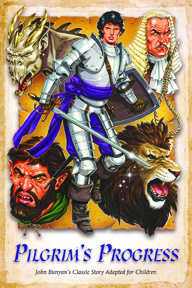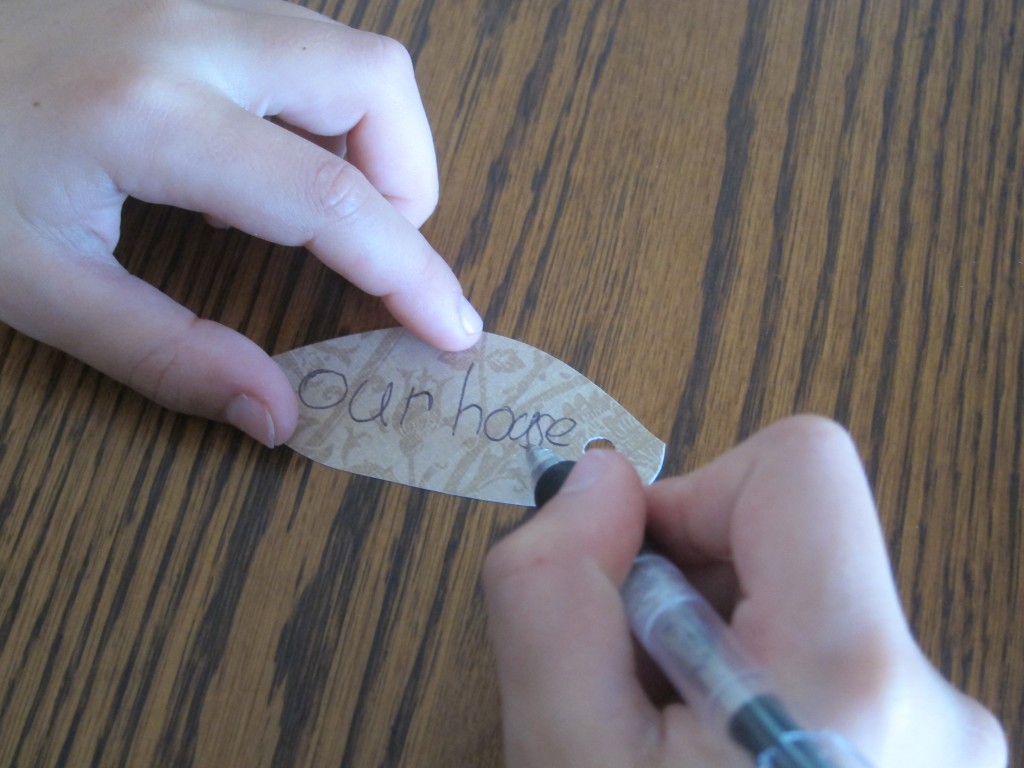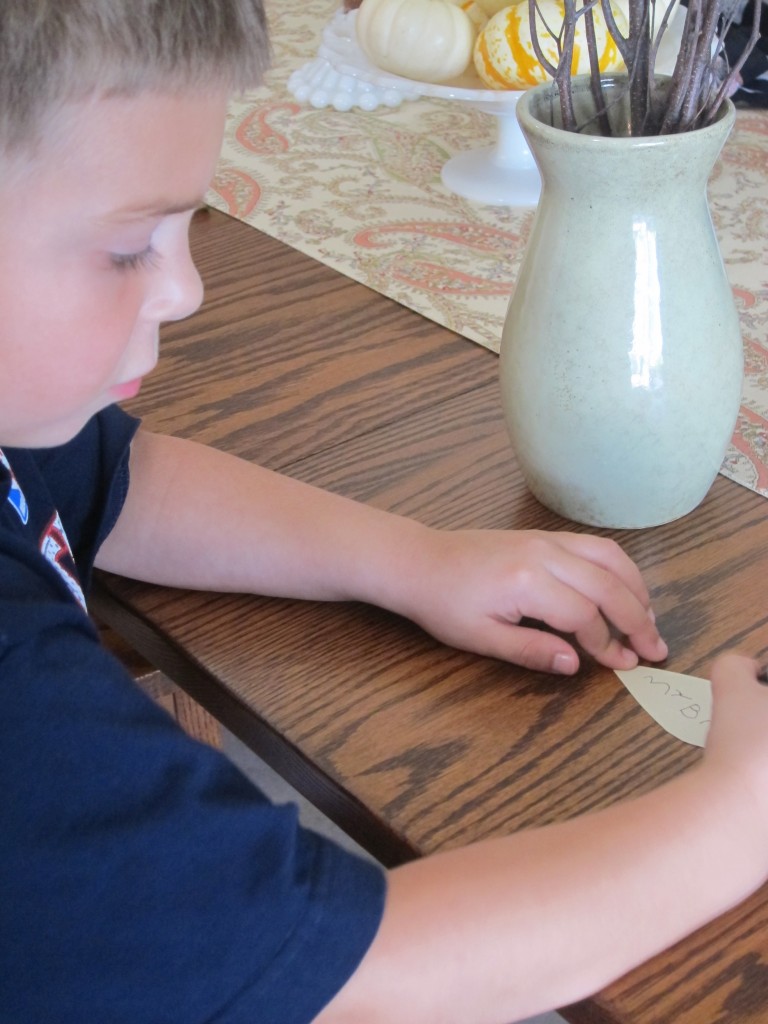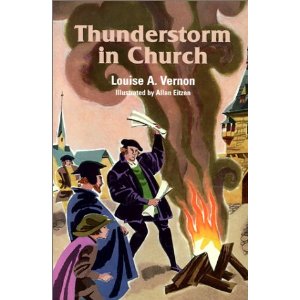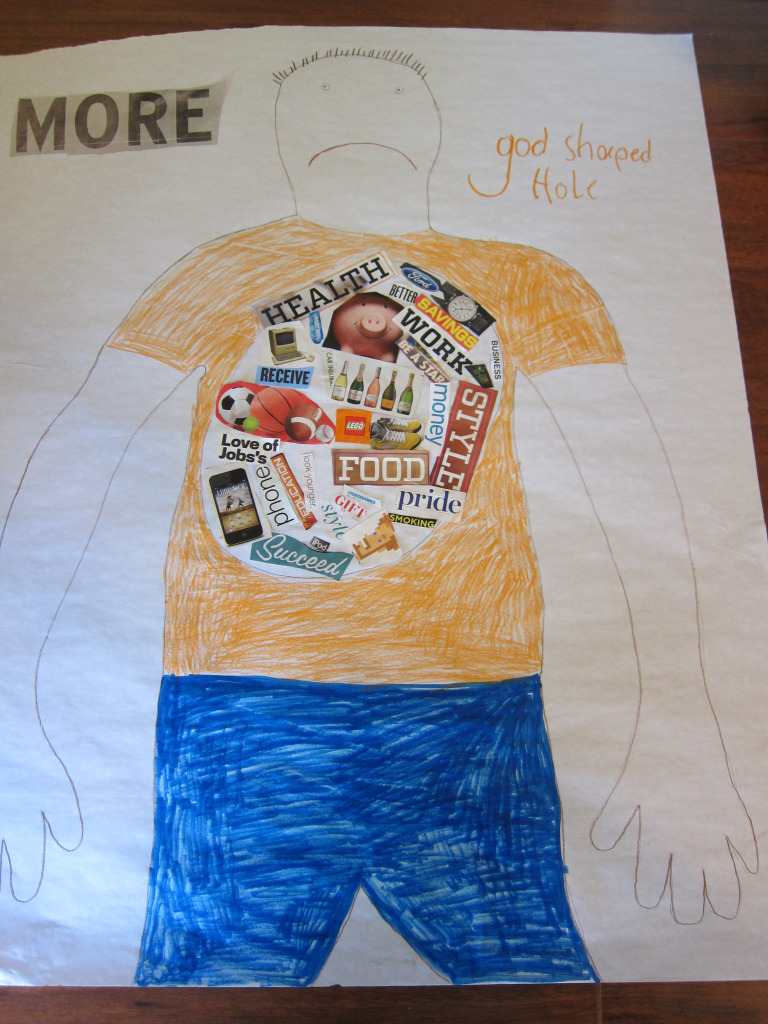 “I wish we could get a cow,” I heard my son say from the living room. “What?” I responded, not sure I had heard him right. I turned off the water at the sink where I stood washing dishes. “A cow costs too much. But we could get chickens.” He held up the World Vision gift catalog for me to see. “Oh. Yes, a cow is much more than you guys have saved” I said, thankful that he didn’t actually want a cow of his own. Each year my boys save their change and then buy a present for Jesus. Last year, they filled out this printable I found online, a letter to Jesus, telling him that they wanted to save their money to help the least of these. We recently counted up the money they saved over this year and talked about how they wanted to use it. My son found the World Vision gift catalog that had just come in the mail and browsed through all the ways they could help those in need. I also told them about an opportunity we had to join friend’s of our ours who recently moved to Nicaragua in reaching out to the poor in their small coastal village. In the end, the boys chose to divide their money between chickens and helping provide for needs in a remote Nicaraguan village. This time of year can be hard for children to keep their hearts focused on others. They are bombarded with commercials and ads telling them they need the latest toys and gadgets. Soon, they forget that it is Christ we are celebrating and not ourselves. Developing family traditions that involve intentional giving to those in need can help turn our children’s focus from themselves to others. In our family, it is something we talk about all year as my children fill their special money jar for giving at Christmas time. We also put together a shoebox filled with toys and necessesities for Samaritan’s Purse to give to a child in need. On December 6, we like to pretend to be St. Nicholas (December 6 is traditionally St. Nicholas Day) and fill stockings with needed items and give them to a shelter or some ministry that serves those in need. We receive catalogs from a number of ministries that serve those in need around the world. I like to leave those lying around so that we will browse through them (maybe instead of toy catalogs!) and be thinking about what we can buy for someone else. Truly, the options for giving are endless.
“I wish we could get a cow,” I heard my son say from the living room. “What?” I responded, not sure I had heard him right. I turned off the water at the sink where I stood washing dishes. “A cow costs too much. But we could get chickens.” He held up the World Vision gift catalog for me to see. “Oh. Yes, a cow is much more than you guys have saved” I said, thankful that he didn’t actually want a cow of his own. Each year my boys save their change and then buy a present for Jesus. Last year, they filled out this printable I found online, a letter to Jesus, telling him that they wanted to save their money to help the least of these. We recently counted up the money they saved over this year and talked about how they wanted to use it. My son found the World Vision gift catalog that had just come in the mail and browsed through all the ways they could help those in need. I also told them about an opportunity we had to join friend’s of our ours who recently moved to Nicaragua in reaching out to the poor in their small coastal village. In the end, the boys chose to divide their money between chickens and helping provide for needs in a remote Nicaraguan village. This time of year can be hard for children to keep their hearts focused on others. They are bombarded with commercials and ads telling them they need the latest toys and gadgets. Soon, they forget that it is Christ we are celebrating and not ourselves. Developing family traditions that involve intentional giving to those in need can help turn our children’s focus from themselves to others. In our family, it is something we talk about all year as my children fill their special money jar for giving at Christmas time. We also put together a shoebox filled with toys and necessesities for Samaritan’s Purse to give to a child in need. On December 6, we like to pretend to be St. Nicholas (December 6 is traditionally St. Nicholas Day) and fill stockings with needed items and give them to a shelter or some ministry that serves those in need. We receive catalogs from a number of ministries that serve those in need around the world. I like to leave those lying around so that we will browse through them (maybe instead of toy catalogs!) and be thinking about what we can buy for someone else. Truly, the options for giving are endless.  Here are a few more thoughts and ideas on giving: 1. Shop ministry catalogs together as a family: Compassion, World Vision, Samaritan’s Purse, Blood Water Mission. They give opportunities to purchase medicine, access to water, animals, education and more. 2. Sponsor a child together as a family through Compassion or World Vision. 3. Participate in an Angel Tree gift giving event. 4. Donate to a missionary or ministry organization as a family. 5. If money is tight, donate time instead. There are many ministries that need able bodies and hands to do the work it takes to serve those in need. Or offer to help do yard work, house repairs or some other job for an elderly or sick person that you know. 6. Donate gently used toys and books to a local ministry. Have your children go through what they don’t use anymore and take them to a ministry that will give them to children in need. 7. Bake cookies or some other treat and take them to a shut in, nursing home, or to a lonely neighbor. 8. There’s a cute little book for young ones called Why We Give Gifts at Christmas Time
Here are a few more thoughts and ideas on giving: 1. Shop ministry catalogs together as a family: Compassion, World Vision, Samaritan’s Purse, Blood Water Mission. They give opportunities to purchase medicine, access to water, animals, education and more. 2. Sponsor a child together as a family through Compassion or World Vision. 3. Participate in an Angel Tree gift giving event. 4. Donate to a missionary or ministry organization as a family. 5. If money is tight, donate time instead. There are many ministries that need able bodies and hands to do the work it takes to serve those in need. Or offer to help do yard work, house repairs or some other job for an elderly or sick person that you know. 6. Donate gently used toys and books to a local ministry. Have your children go through what they don’t use anymore and take them to a ministry that will give them to children in need. 7. Bake cookies or some other treat and take them to a shut in, nursing home, or to a lonely neighbor. 8. There’s a cute little book for young ones called Why We Give Gifts at Christmas Time![]() where children in a classroom share with one another the Biblical reasons for giving to others.*
where children in a classroom share with one another the Biblical reasons for giving to others.*
“Mom, I need to add something to my Christmas wish list.”
It’s that time of year again. The stores are adorned with all things red and green. Mailboxes and inboxes are filled with ads, sales, and catalogs. Prettily wrapped packages are at the forefront of nearly everyone’s minds — especially kids’.
Christmas provides a wonderful opportunity to pour the truths of the gospel into the hearts of our children. It’s an ideal time to show them the greatest gift they could ever receive, the gift of Jesus Christ.
Below is a list of important truths to teach our children this Christmas:
1. The Story of Redemption
During Advent, with the anticipation of the 25th, we can teach and prepare our children for the celebration in Scripture of Jesus’s birth. In our family, we like to begin with the story of Creation and daily walk through the story of redemption until we get to Christ’s birth on Christmas day. We talk about the fall and God’s promise of a Savior in Genesis 3:15. We read about his promise to Abraham that he reaffirms throughout the Old Testament. We discuss Moses and the “one greater than Moses” who would come. We read the prophecies in Isaiah. We look at how all of the Bible points to our Redeemer….to read the rest of this post, visit Desiring God, one of my other writing homes.
“Mom, when will we get out our Advent Box?” my son asked the other day. This is a tradition we have had since he was a baby and one he looks forward to each year.

Do you have any favorite Christmas traditions from when you were a child? Perhaps it is going together as a family to pick out the perfect tree. Maybe it’s the cookies you baked together with your mom. Traditions are important to us. They give us an anchor and bind us together with our family. Traditions make us feel connected and give us a sense of belonging.
In the Bible, traditions were important to God’s people. God instructed them to celebrate certain feasts and festivals each year. These events were to be used to reflect and remind God’s people of all God had done for them. Parents were instructed to use these festivals to teach their children about God and what He had done for His people.
“This is a day you are to commemorate; for the generations to come you shall celebrate it as a festival to the Lord—a lasting ordinance…And when your children ask you, ‘What does this ceremony mean to you?’ then tell them, ‘It is the Passover sacrifice to the Lord, who passed over the houses of the Israelites in Egypt and spared our homes when he struck down the Egyptians.’” Exodus 12: 14, 26-27
Christmas is an opportune time for Christian parents to “teach Jesus” to their children. Teaching them about what Jesus has done is not simply about reading to them the Christmas story, though it is certainly not less than that. It’s an opportunity to show our children how all of Scripture tells us about Jesus, how as The Jesus Storybook Bible![]() puts it, “every story whispers his name.”
puts it, “every story whispers his name.”
There are many different activities and ways to do this. Some families use an Advent wreath (and we have one of those) and some make a Jesse Tree (another great idea). Our favorite Christmas tradition is our “Advent Box.” When I was a child, I remember having an Advent calendar where each day I tore open the door and inside was a piece of chocolate. There is something fun about opening a little door each day to find a hidden surprise.
For our children, we have a wooden Advent Box with twenty-five doors. Inside each door I place an object that relates to what I want my children to learn during the Christmas season. I also place objects that signify an activity we might be doing that day. Since there are so many activities that we do during the holidays (putting up a tree, wrapping presents, baking cookies, sending cards, visiting a live nativity, etc.), I want to use these activities to point my children to Jesus. I also want to use the Advent season to read through the story of redemption with my children. And for each object that they pull out, I have a corresponding Bible passage that we read.
Here are a few examples:
1. I like to start out the first few days focusing on the promised Savior. Day one might have a small apple that will represent the Fall of mankind and the Savior promised in Genesis 3:15. We will read the passage and discuss it. The next day might have a little scroll behind the door. That day we read the prophecies in Isaiah about Jesus’ birth. We talk about how all of the Old Testament points to the promised Savior.
2. I also include objects that tell the story surrounding Jesus’ birth. Examples include: The angel telling Mary about Jesus, Mary’s Song, the journey to Bethlehem, the birth of Jesus, the shepherd’s visiting the manger, etc. (Objects I use might include a small angel ornament, a small sheep, a donkey, etc.)
3. In addition, I like to include passages that speak of why Jesus was born, about His second coming and the great wedding feast. I like to include a small cross and read passages about Jesus’ death. We also enjoy reading books like “The Princes Poison Cup” by R.C. Sproul. Other objects I include are a small trumpet ornament as an object to represent the second Advent and confetti to represent the great wedding feast.
4. For the various activities we do during the holidays, I include an object about the activity and a passage to read. If we are wrapping presents one day, I will put a little bow in the Advent box and we read John 3:16. If we are baking cookies or some other treat, I will include passages about Jesus being the Bread of Life. If we are purchasing gifts to give the homeless or someone else in need, I include a small communion cup and we read the passage from Matthew 25:37. If we plan to drive around looking at Christmas lights that evening, I will include a little light bulb and we will read the verse about Jesus being the light of the world.
The objects I use are really anything I can find that is small enough to fit in the box. Many of them are ornaments. The boys have their own small tree in their bedroom. As they accumulate ornaments throughout Advent, they add them to their tree.
There are a number of different activities to do during the holidays to point our children to Christ. The Advent box is one way we like to keep the focus of the holiday on our Lord.
To see a sample of the passages we read and objects I place in our box, click here. For more inspiration on making your own Advent traditions, see: Treasuring God in Our Traditions![]() and Christmas Out of the Advent Box: Reclaiming Christmas for Fun, Faith and Family
and Christmas Out of the Advent Box: Reclaiming Christmas for Fun, Faith and Family![]()
Stay tuned in the coming weeks for more Advent ideas!
How about you? What is your family’s favorite Advent tradition? Please share your ideas!
“…God, help me to be repentant. And help me to cross the river to the Celestial City. Amen.”
My youngest prayed this prayer after we finished reading the famed allegory, Pilgrim’s Progress: John Bunyan’s Classic Story Adapted for Children![]() . Next to the Bible, it has sold the most copies of books since it’s publishing in the seventeenth century. Pilgrim’s Progress is an allegory, or a symbolic narrative, about the Christian life. If you are not familiar with the story, Pilgrim’s Progress is about a man named Christian who goes on a journey to the Celestial City. Leaving the City of Destruction behind, he must stay on the narrow path and along the way he is tempted, wanders off the path, meets fellow travelers and even gets captured by a giant named Despair. Each step of the story symbolizes the journey we as Christians take in this life of faith.
. Next to the Bible, it has sold the most copies of books since it’s publishing in the seventeenth century. Pilgrim’s Progress is an allegory, or a symbolic narrative, about the Christian life. If you are not familiar with the story, Pilgrim’s Progress is about a man named Christian who goes on a journey to the Celestial City. Leaving the City of Destruction behind, he must stay on the narrow path and along the way he is tempted, wanders off the path, meets fellow travelers and even gets captured by a giant named Despair. Each step of the story symbolizes the journey we as Christians take in this life of faith.
Allegories are useful and helpful ways to share the truth of God’s word with children. After all, even in Scripture, God communicates to us in words and concepts that we understand. Jesus taught the disciples through parables and word pictures. The Bible uses the example of marriage to explain our relationship with God. Agrarian related stories abound through the Bible. Jesus is compared to a vine and a shepherd. Christians are related to sheep and land stewards. Even Nathan used a symbolic story to point out David’s sin to him in 2 Samuel 12. The book of Proverbs uses analogies and word pictures to explain the way of wisdom. Whenever possible, the inspired writer’s of Scripture used examples from everyday life to help explain spiritual concepts.
As parents, we can use allegories and symbolic stories to explain spiritual truths to our children. We can make up our own stories and use them during teaching moments or in discipline. I’ve done something similar to what Nathan did with David with my own children. We could also encourage our children to think of their own symbolic stories to explain a spiritual truth they have learned. There are also many wonderful allegories already written for children. Aside from Pilgrim’s Progress, The Chronicles of Narnia are the most well-known example. We can’t help but think of Jesus when Aslan takes Edmund’s place, accepting the punishment he deserved.
Below, I have listed some of our favorite allegorical books:
Pilgrim’s Progress: John Bunyan’s Classic Story Adapted for Children![]()


Wise Words: Family Stories That Bring the Proverbs to Life![]()
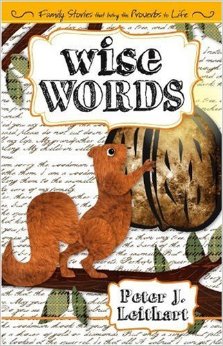
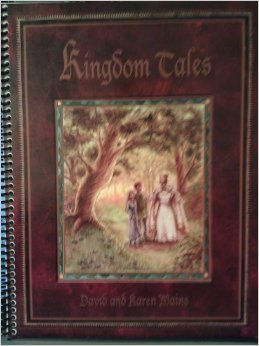
The Chronicles of Narnia Box Set: Full-Color Collector’s Edition![]()
Have you taught your children spiritual truths using your own parables, allegories, or analogies? Do you and your children have a favorite allegorical book?
Tomorrow is the first day of November. Thanksgiving is just around the corner. It is a favored time of year filled with all things pumpkin, turkey, friends, family, and football. It is also a time when many reflect and consider all the blessings God has given during the year.
Gratitude is a habit we try to instill in our family. I say try, because our hearts are prone to wander. As parents, we quickly forget all the ways God blesses us with his grace. My children forget as well. But our goal is to be intentional in showing them how much they have been given, not just materially, but also in pointing out all the blessings they have because of and through the gospel of grace.
We often put this into practice when there is a problem with whining or discontent. We all stop and take turns counting the ways God has blessed us. Sometimes, we just need to turn our eyes away from what we think we don’t have and look instead at all that we do have. And the truth is, we have an awful lot. I don’t just mean materially, though in our culture that is certainly the case. But we also have far more riches through Christ than we even realize. Pointing our children and ourselves to the gospel of grace helps us see how much we’ve been given. Through faith in Christ, we are children of the Father and heirs of the Kingdom. We have complete and full access to our Father who hears our every cry and knows our every need. God promises for us in Scripture alone are worthy of our praise and thanksgiving. And not just on Thanksgiving Day but every day.
For the last few years, each November first I’ve set out a Thanksgiving Tree. I use a simple vase, tree branches, and cardstock. I place a bowl filled with cut out leaves and a pen next to the tree. Whenever we think of something we are grateful for, we write it down on one of the leaves and hang it on the tree. By the time Thanksgiving Day arrives, our tree is full of leaves. It’s a simple activity but one that can help foster a heart of gratitude.
Do you have any fun Thanksgiving activities you like to do with your children to foster a heart of thanksgiving? I would love to hear!
Next week is Reformation Day. (I know, you thought it was some other holiday:). On October 31, 1517, Martin Luther nailed 95 theses (or problems) to the door at Wittenberg Castle, triggering the Protestant Reformation. In reading scripture, Luther had come across the passage in Romans that says, “For in the gospel a righteousness from God is revealed, a righteousness that is by faith from first to last, just as it is written: “The righteous will live by faith.” (1:17) This passage opened his eyes to the gospel of grace and the church hasn’t been the same since.
It’s important for children to understand church history and how the church came to be what it is today. Theological truths that we take for granted today were ones that those in the early church and during the Reformation died for. When children learn the stories of Martin Luther and other Reformers, they can see how God works through his people to spread the gospel of grace.
If you are interested in studying the Reformation with your children, here are a few ideas.
1. Create a lap book: One year my son created a lap book on Martin Luther. He wrote out the 5 solas with homemade ink and a feather. We listened to and discussed Martin Luther’s hymn, “Almighty Fortress is Our God” and made a vocabulary list of important words and terms associated with the Reformation. I found a printable image of Luther and a printable of “Almighty Fortress” from this website. More great ideas for homeschoolers can be found here.
2. We also have a number of books we like to read:
The Church History ABCs: Augustine and 25 Other Heroes of the Faith![]()
Martin Luther: A Man Who Changed The World![]()
Ten Boys Who Made A Difference (Lightkeepers)![]() (by the way, this is a fabulous series for kids. There is a set for boys and for girls).
(by the way, this is a fabulous series for kids. There is a set for boys and for girls).
John Calvin: After Darkness Light (Trailblazer)![]()
Other book ideas: read about other Reformation heroes, such as John Knox, Ulrich Zwingli, the Huguenots, Lady Jane Grey.
3. Sojourn Kids has some great ideas that we plan to use this year. One is making a Luther rose. They also had a fun idea of serving gummy worms as a snack (from the Diet of Worms where Martin Luther stood trial). I know my kids will love that!
4. The movie Luther![]() is an excellent movie if you have older children. I have seen it but have not yet shown it to my kids, perhaps in a couple more years. Plugged In has a good review to help you decide if it’s something for your kids to see.
is an excellent movie if you have older children. I have seen it but have not yet shown it to my kids, perhaps in a couple more years. Plugged In has a good review to help you decide if it’s something for your kids to see.
5. A coloring page for little ones can be found here.
How about you? Have you ever taught your children about the Reformation?
I am out of town this week, enjoying the sites, smells, and especially the weather, of fall. For Teach Me Jesus Thursday today, I thought I’d share with you an activity from the archives that I’ve done with my boys concerning the “God Shaped Hole” in our hearts.
“And you must love the Lord your God with all your heart, all your soul, and all your strength” (Deuteronomy 6:5). This is something I talk and pray about with my children all the time. There is much in our children’s life that fight to take up the space in their heart reserved for God alone. How many adults struggle with greed, pride, addictions, and more because they are seeking to fill what Pascal referred to as a “God-shaped hole” in their heart.
“There is a God shaped vacuum in the heart of every man which cannot be filled by any created thing, but only by God, the Creator, made known through Jesus.” Blaise Pascal
We need to help our children understand that their sinful nature seeks to fill the “God Shaped Hole” with anything else other than God. We also need to teach them that loving anything more than God will only make them feel empty. God is the only one who can fill all their longings. Only he can meet their deepest desires and make them complete. And until God has first place in their heart, they will live restless lives. “You have made us for yourself, O Lord, and our hearts are restless until they rest in You.” (St. Augustine)
Plumb has a great song about this concept that I have had my kids listen to (God-Shaped Hole![]() )
)
“There’s a God-shaped hole in all of us
and the restless soul is searching
There’s a God-shaped hole in all of us
And it’s a void only He can fill”
I have also had my children do a craft activity to help them think through and see all the various things that we try to fill our hearts with. For this activity, I traced the top half of my son onto a large piece of paper. We drew a large hole shape and filled it with words and pictures of things that people put in their heart instead of God. We talked about each idol and why it might be tempting to love it more than God. And we talked about how only because of what Jesus did at the cross can we be free to love and worship God alone. Only through Christ and the power of his Spirit can we keep second things from becoming first things in our heart.
 For a smaller version, these two cutouts of people have words describing idols in the one on the left and the one on the right is what is produced in our heart when God is the center.
For a smaller version, these two cutouts of people have words describing idols in the one on the left and the one on the right is what is produced in our heart when God is the center.
“Mommy, why does God allow tornadoes that damage homes and hurt people?”
“Mom, why doesn’t God keep Christians from getting sick? Isn’t it Satan who wants Christians to suffer and be sick?”
As my kids get older, they ask more and more questions about the tough things in life. Recently, I’ve been getting questions related to God’s sovereignty and his control over all things. When I am unsure of how to explain a topic to my kids, I often look for a book from a trusted author to help me explain it in a way that they can understand. Sally Michael wrote a new study for children, God’s Providence, released this past spring. For regular readers here, you know that I have written and raved about her other studies. And again, I found her book, God’s Providence, to be an excellent tool and resource for helping our children understand God’s control over all things.
Like her other books, this book is written in a devotional format. Each chapter is short and covers a different aspect of God’s providence. Using stories from Scripture, such as Moses, Elijah, Job, the Israelites, and the Apostle Paul, the author helps children see how God is always “watching and working” in the world. Through the devotional stories, the Scripture readings, and the discussion questions, children learn that God is in control over all things. His plans always work, nothing happens outside of his will, and its all for his glory.
We live in a fallen world where sin has damaged and marred all that God has made. Bad things happen, evil exists, people get sick, and storms ravage the world. Our children need to have a foundation and theology on which to stand for when their life is impacted by trials and storms. They need to know what they believe about God and why, for without deep roots of faith in a sovereign God, they cannot stand against the harsh winds of life. The truths about God’s providence that children will learn in this book will give them great hope and comfort when life seems uncertain and out of control.
I had the opportunity to ask Sally Michael a few questions about this book that I want to share with you today:
1. What is the most important thing parent’s can do in teaching their children about God’s Providence? “The most important thing parents can do in teaching their children about God’s providence is to rest in God’s providence. By that I mean, to be an example of truly trusting that all that happens to us is according to God’s plan which is good and for our good.”
2. Do you find that this is a difficult concept for children to understand? “I don’t think God’s providence is difficult for children to understand provided that it is explained in an age-appropriate manner.” Is there a certain age that you think children are able to understand? “I think God’s providence can be explained to the youngest of children using simple vocabulary such as “God is the boss of everything” or “God is in charge of everything.” Their understanding is limited but they can understand the basic concept.”
3. How important is it to a child’s faith to understand God’s providence over all things? “I think understanding that God is sovereign over all things gives children the confidence that they can trust God in all circumstances. There are no situations that arise that are out of God’s control or contrary to His promise that all things work for good for His children. Understanding this builds a foundation of trust and confidence in God that grows as a child experiences life circumstances that in time prove God’s good sovereign hand in them.”
4. How should we handle difficult questions children might ask as they think about and process what they are learning? “I don’t think we should shy away from difficult truths. We should explain God’s sovereignty over evil and suffering in clear and age-appropriate ways. Children are able to handle difficult truths as they don’t yet have the emotional baggage that adults carry. God is able to take care of His reputation and to prove Himself good.” Should we be prepared to have an answer to every question or is it okay to sometimes say, “I don’t know”? “We should be prepared to answer children’s questions adequately and correctly. When we don’t know the answer, we should tell them so and do further study. Those things which are a mystery known only to God we should state as such and note the vast difference between God and man. God is incomprehensible and His knowledge beyond our understanding.”
5. Is there anything else you’d like to say to parents who will use this book? “Read the book more than once and begin to practice these truths in real life. Point out God’s sovereign hand daily and His providence over all things. As you demonstrate that you trust God’s hand of providence, your child will begin to understand true faith. Encourage your child to trust God regardless of how the circumstances appear and remind them that the “good” of Romans 8:28 is that we be conformed to the image of Jesus.”
Almost as much as I love books, I also love to give books away! Today I am giving away one copy of God’s Providence. The reader will be announced on Saturday, October 12. US residents only. *Update* Elissa is the winner of the book. Congrats, Elissa! I will contact you for your info.
“Mom, will there be baseball in heaven?”
“Mom, why doesn’t God stop bad storms like tornados?”
“Mom, why do I have to forgive him? He hit me first!”
These are just some of the questions I hear on a daily basis from my kids. As a parent, I want my kids to ask the tough questions about God, life, and why things happen. Too often though, it’s easier to expect Sunday school teachers, children’s programs, and other church activities to teach our children about God and his story of redemption.
Yet this is not the expectation God has for us as parents…to read the rest of this post, visit Kirk Cameron’s website, my writing home today.
My oldest son turns nine this weekend. Nine. I often say that a hurricane made me a parent and motherhood has been a whirlwind ever since. When I look back to the day he was born, it seems like only yesterday.
When Hurricane Jeanne loomed large out over the ocean we had to decide where to go. Because our house isn’t safe enough to endure a hurricane, we had to make a choice to either drive an hour and a half inland to my in-laws house or bunk up at a friend’s house in town. Being nine months pregnant, we chose the latter option. Eight of us gathered at my friend’s house and stayed there overnight until the storm passed. We returned home to a flooded neighborhood and where half the houses roofs were torn off. Palm trees lay in the streets. No one had power. I tried to rest in the stifling late summer heat while everyone else worked to inspect damage and clean up debris. Then later that evening, my water broke.
Speed forward nine years and I’m struck by how quickly time has passed. And then I realize, I’m halfway there. I am halfway through with raising my oldest son. In nine years he will be legally an adult and probably on his way to college.
As my mind struggles to wrap around that fact, I also begin to feel weighed down with the pressure to teach him everything he needs to know. What if there is something I’ve missed? What if I get to his eighteenth birthday and realize I’ve not prepared him for life?
When my mind and heart becomes consumed with the “what if’s” of life, the only thing I know to do is pray. I have to give it to God and trust him to help me faithfully parent and raise both of my children to know and love him. I have trust his grace to fill in all the cracks that my imperfect and sinful parenting will inevitably leave behind.
Maybe you are half way there as well. Or maybe you are only just beginning. As parents, we all want to do the very best for our children. We read every book. We invest time, money, energy, sweat and tears into raising our children. Yet one of the very best things we can do and too often fail to do, is pray.
If you’ve visited here before, you know that I like to write out my prayers. This is one that I have written multiple times in the quiet moments of my time with my Abba. And it’s one you can use too.
Dear Father in Heaven,
I come to you burdened and weighed down by the responsibility of this little one you’ve given me. Every time I think I know what to expect, things change. In fact, nothing about parenting has been what I expected. It’s been so much harder and at the same time, so much more beautiful, transforming, and wonderful than I imagined.
But the truth is, I worry. I worry that I will fail. I worry that my inadequacies will harm him in some way. I worry that he won’t be ready for the life you have for him. I worry about all that he won’t be prepared for.
Yet your word tells me not to worry. Forgive me for that. Forgive me for assuming that the outcome is in my hands and in my control. Forgive me for not trusting in your grace and mercy. Forgive me for my failures, my mistakes, my sins in parenting. Forgive me for all the times I fail to point my son to you.
Help me to raise this child. I want to glorify you in all I say and do. Prompt me when I am about to say something unkind. Pierce my heart with conviction when I am responding to my child in sin. Help me to remember your grace at the cross and the forgiveness purchased for me there. May I forgive as I have been forgiven. May I extend the grace I have been given. May I love my child as you have loved me. And may he see Christ in me.
Help me to teach him all you want him to know. Help me not to miss any gospel teaching moments. Help me to show him Jesus “when you sit at home and when you walk along the road, when you lie down and when you get up” (Deuteronomy 11:19).
And so I am trusting you in the raising of my child-give me greater trust. I ask that you would help him to grow to love you with all his heart. I pray that you would convict him of sin and show him his need for a Savior. Humble him. Show him his sin. Ratify your covenant in him. May he never know a day that he has not trusted you for his salvation.
Help him to be quick to repent. Help him to love the gospel and the gift of grace he has through Christ. Give him a heart that loves your word and hates sin. Help him to love others as you have loved him. Prepare him even now for the role you have for him in your Kingdom. Use him to spread the gospel and love of Christ to the nations. Protect his mind and heart from evil. Keep the truth always before him.
I know that you have loved him from before the foundations of the world. I know that you love him more than I ever could hope to love him. And I know that you are faithful, good, holy, and gracious in all you do.
Please hear this prayer and all the cries of my heart today. Because of Jesus and through Jesus I pray, Amen.


